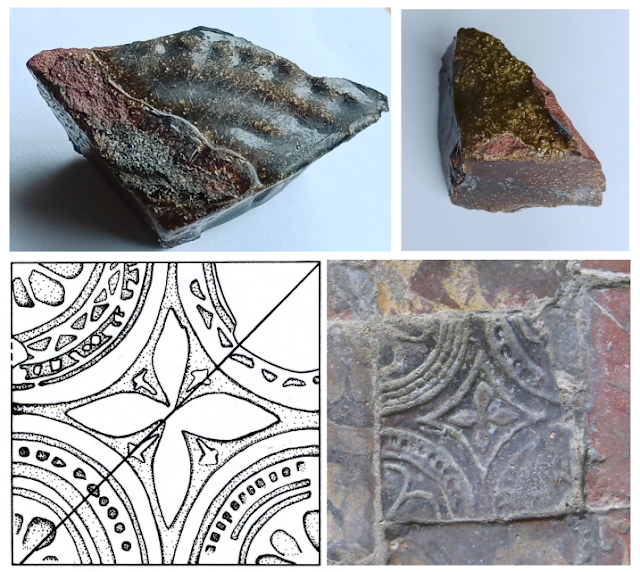Day one of our new project got off to a flying start, despite the site being on heavy clay with natural springs providing some improvised water features.
We uncovered about half of the outline, some internal walls and a little of the floor, of a building which we believe housed a steam powered pump, used to supply water to the hall from around 1890. What appears to be a well seems to be partially built in to one wall and this may have been from where the water was abstracted.
As often happens, unstratified finds which predate known features came to light, one of which was quite spectacular - a corner fragment from a glazed floor tile of fifteenth century date. This particular pattern is a known variety, recorded at the British Museum and the definitive reference work. Examples are known from Lilleshall Abbey, Much Wenlock Priory and Acton Burnell church, none of which are too distant from our site.
 |
| Our find at top, BM illustration at bottom left and extant example at Much Wenlock. |
Pure speculation, but we're digging about 300m from a church which dates back as far as the 12th century; perhaps it had a new floor in the 1400s which was subsequently replaced...?
This promises to be a fascinating site, with a range of features covering at least the last three centuries.

